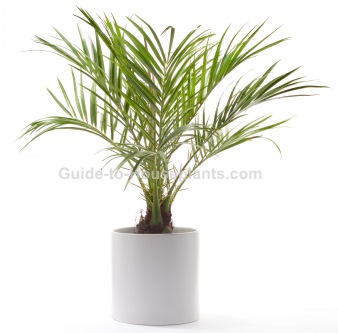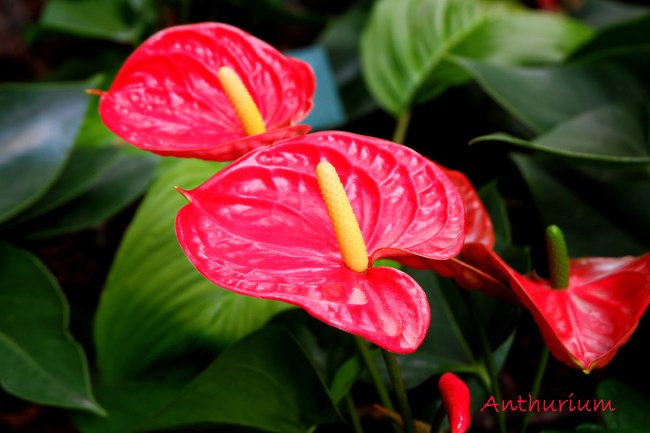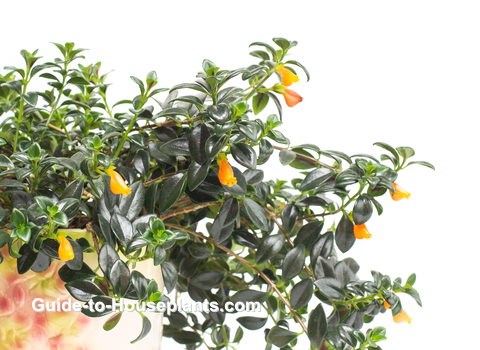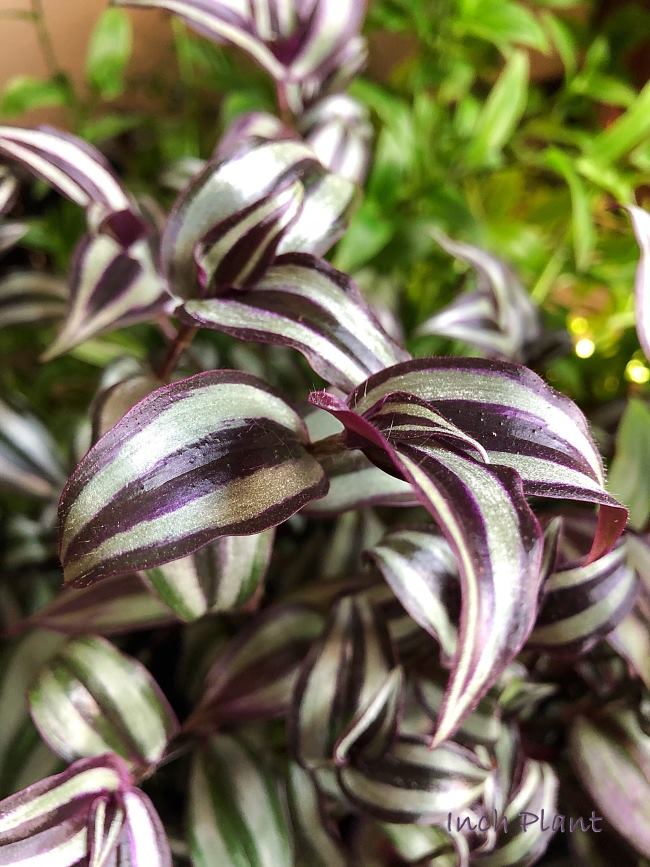Pygmy Date Palm Tree
Botanical Name: Phoenix roebelenii
Pygmy Date Palm will give any sun-splashed room a breezy vacay vibe. It's easy to live with, too. This tropical native likes the same warm temps and sunlight we do. Get to know your dwarf palm and you'll help it to thrive indoors for years to come.

Get to Know Pygmy Date Palm
This easy-care palm is a dwarf plant reaching several feet tall after several years. Give it some space, though. Although slow-growing, this indoor palm will eventually spread to about 4 ft wide.
Its long, arching fronds feature slender, delicate-looking leaflets. Unlike other date palms, this one has soft leaflets giving it a feathery, elegant look.
There are sharp spines at the bases of the leaflets, so it's a good idea to wear garden gloves when trimming off old fronds.
What's in a name?
Pygmy Date Palm also goes by the common name Dwarf Date Palm.
This palm is usually sold by the species name. Look for Phoenix roebelenii to be sure you're getting this plant.
Phoenix roebelenii Problems, Solutions and Answers
Brown leaf tips? If the tips of the leaflets turn brown and crispy, the air is too dry. This Southeastern Asia native needs a humid environment. Mist the plant often or use a cool-mist room humidifier to raise the humidity in the air around it.
Wondering whether to repot? Repot a young plant in spring every couple years, to give it the space it needs to grow. When it gets older, just top dress by replacing the top couple inches of soil. Pygmy Date Palm has delicate roots and doesn't like to be disturbed. Use a heavy container to prevent it from toppling because this spreading palm gets top-heavy.
Watch for pests. Scale insects are brown, oval bugs that tend to hide out on the undersides of the fronds, along the midrib. As scale feed on plants, they excrete honeydew -- a sticky substance that often attracts sooty mold. Isolate an affected plant and treat any infestation immediately.
Does Phoenix roebelenii flower and grow dates? This tropical palm grows creamy white flowers and edible fruits when grown outdoors, but don't expect them on your houseplant. When grown indoors, it rarely flowers because light levels are too low.
Is Pygmy Date Palm poisonous? No, it's non-toxic for cats and dogs. However, you won't want your pet scratching, pawing or biting on the palm because the base of the fronds are covered with sharp spines, which can cause harm.
Pygmy Date Palm Care Tips
Origin: Southeast Asia
Height: Up to 6 ft (1.8 m) indoors
Light: Bright indirect light. Strong morning light from an East-facing window will give your palm the light it needs. Give the plant a quarter turn every week to expose all sides to sunlight.
Water: Pygmy Date Palm doesn't require a lot of attention, but be careful not to overwater it. Poor drainage and soggy soil can cause root rot. It is best to use a pot with a drainage hole. Water thoroughly to be sure that all the roots are moistened, allowing excess water to drain out of the pot. Aim to keep soil moist spring through summer and barely moist in fall and winter.
Humidity: This tropical native likes high humidity. Indoor air can become extremely dry without our noticing it. I use a humidity monitor near my tropical plants, rather than guess. When the relative humidity drops below 50%, stand the pot on a wet pebble tray or use a cool-mist room humidifier.
Temperature: Average to warm 65-85°F/18-29°C year-round. It will tolerate a minimum of 55°F/13°C in winter.
Soil: Use a potting mix that drains well. I recommend adding perlite or sand to a standard potting mix.
Fertilizer: Feed once in spring and again in summer with a time-release fertilizer. Rose fertilizer works well because it provides the micronutrients this palm needs. A shortage of magnesium will cause yellow spots on the leaflets.
Propagation: Cut off the suckers that grow at the base of the plant. Be sure to include the roots with it, and pot them in separate containers. Plants can be grown from seeds, but you'll wait years for the plant to grow into a tree.


